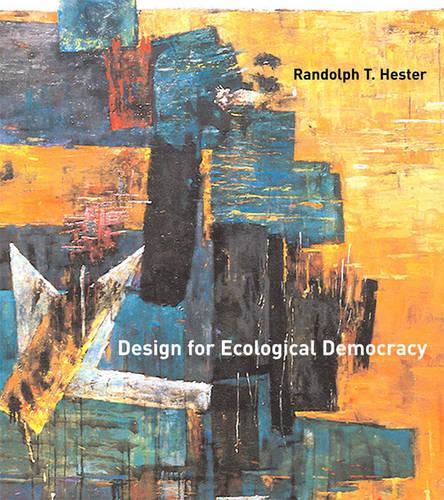
Design for Ecological Democracy
(Paperback)
Publishing Details
Design for Ecological Democracy
By (Author) Randolph T. Hester Jr.
MIT Press Ltd
MIT Press
24th September 2010
United States
Classifications
General
Non Fiction
Urban and municipal planning and policy
711.42
Physical Properties
Paperback
524
Width 203mm, Height 229mm, Spine 24mm
1633g
Description
Shows how to combine the forces of ecological science and participatory democracy to design urban landscapes that enable us to act as communities, are resilient rather than imperiled, and touch our hearts.Over the last fifty years, the process of community building has been lost in the process of city building. City and suburban design divides us from others in our communities, destroys natural habitats, and fails to provide a joyful context for our lives. In Design for Ecological Democracy, Randolph Hester proposes a remedy for our urban anomie. He outlines new principles for urban design that will allow us to forge connections with our fellow citizens and our natural environment. He demonstrates these principles with abundantly illustrated examples-drawn from forty years of design and planning practice-showing how we can design cities that are ecologically resilient, that enhance community, and that give us pleasure. Hester argues that it is only by combining the powerful forces of ecology and democracy that the needed revolution in design will take place. Democracy bestows freedom; ecology creates responsible freedom by explaining our interconnectedness with all creatures. Hester's new design principles are founded on three fundamental issues that integrate democracy and ecology- enabling form, resilient form, and impelling form. Urban design must enable us to be communities rather than zoning-segregated enclaves and to function as informed democracies. A simple bench at a centrally located post office, for example, provides an opportunity for connection and shared experience. Cities must be ecologically resilient rather than ecologically imperiled, adaptable to the surrounding ecology rather than dependent on technological fixes. Resilient form turns increased urban density, for example, into an advantage. And cities should impel us by joy rather than compel us by fear; good cities enrich us rather than limit us. Design for Ecological Democracy is essential reading for designers, planners, environmentalists, community activists, and anyone else who wants to improve a local community.
Reviews
"Hester welds ecology, landscape architecture, and a fierce commitment to strengthening urban society into a nuanced, realistic vision for this complex era."--John R. Stilgoe, Robert & Lois Orchard Professor in the History of Landscape, Havrard University " Design for Ecological Democracy is a compelling testament for a world that is at once ecologically sustainable, socially just, and inspired by place. Hester sees environmental change as a deliberate and positive act involving environmental competence, compelling form, celebration of everyday life, and design action. He brings together a broad but cohesive set of concepts from disciplines as diverse as environmental psychology, environmental science, medicine, and urban design to form a strong vision for future design practice. This is not a doomsday book but a hopeful and challenging call to environmental and community action." Mark Francis , FASLA, Professor of Landscape Architecture, University of California, Davis, and author of Urban Open Space and Village Homes "Randy Hester's profusely illustrated book is the fruitful outcome of his life's work in community design. Design for Ecological Democracy shows us how to adapt human settlements so that people can get back in touch with the sources of natural creation." Bill Thompson , Editor, Landscape Architecture Magazine "A superb analysis of cultural icons too often mentioned or cited but almost never analyzed."--John R. Stilgoe, Robert & Lois Orchard Professor in the History of Landscape, Havrard University "*Design for Ecological Democracy* is a compelling testament for a world that is at once ecologically sustainable, socially just, and inspired by place. Hester sees environmental change as a deliberate and positive act involving environmental competence, compelling form, celebration of everyday life, and design action. He brings together a broad but cohesive set of concepts from disciplines as diverse as environmental psychology, environmental science, medicine, and urban design to form a strong vision for future design practice. This is not a doomsday book but a hopeful and challenging call to environmental and community action."--Mark Francis, FASLA Professor of Landscape Architecture, University of California, Davis, and author of *Urban Open Space* and *Village Homes* "Randy Hester's profusely illustrated book is the fruitful outcome of his life's work in community design. *Design For Ecological Democracy* shows us how to adapt human settlements so that people can get back in touch with the sources of natural creation."--Bill Thompson, Editor, Landscape Architecture Magazine
Author Bio
Randolph T. Hester is Professor and former Department Chair in the Department of Landscape Architecture and Environmental Planning at the University of California, Berkeley, and Principal in the firm Community Development by Design. He is the author of Neighborhood Space, Planning Neighborhood Space with People, and Community Design Primer.
